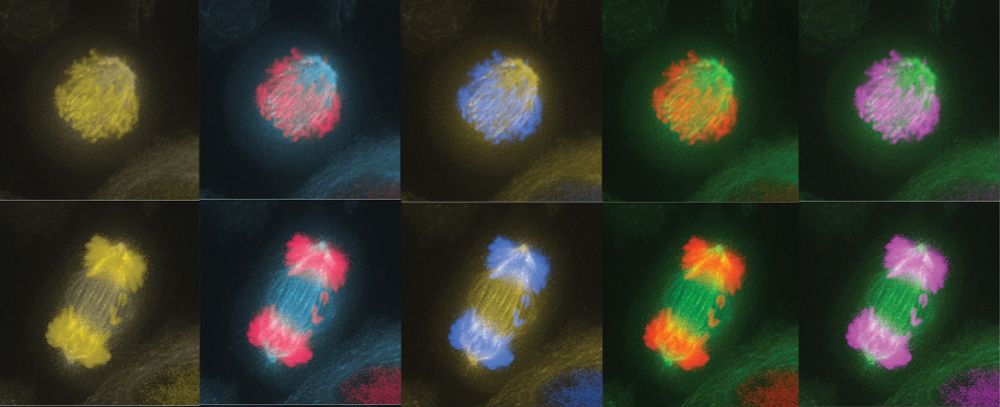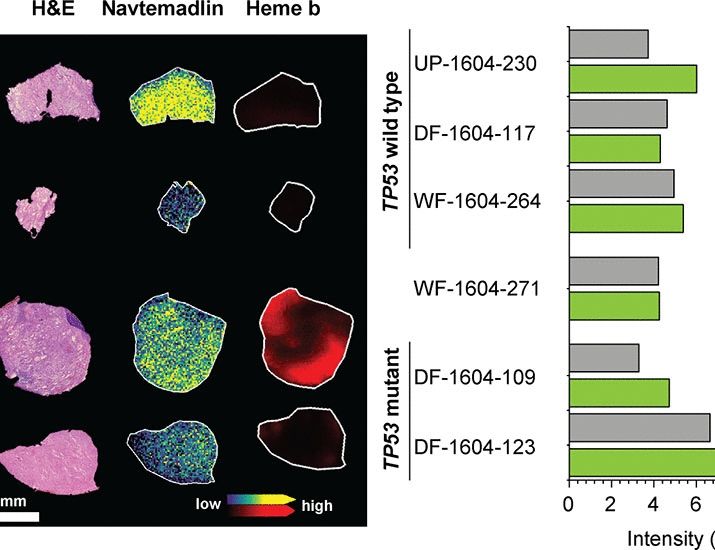Rendo Lab
Better late than never! The Rendo Lab website is officially up and running 🧠 🧬 Read about our ongoing research and the wonderful team that makes it happen!
rendolab.org
06.05.2025 15:45 — 👍 3 🔁 1 💬 0 📌 0
Thanks so much! 🙏🏻
19.03.2025 17:37 — 👍 0 🔁 0 💬 0 📌 0
5/5 Thank you to all the funding agencies that made this research possible, in my case @vetenskapsradet.bsky.social, Cancerfonden, and the Berth von Kantzows Foundation.
19.03.2025 15:43 — 👍 0 🔁 0 💬 0 📌 0
4/5 Thank you @rameenberoukhim.bsky.social and @bandolab.bsky.social for your constant trust, mentorship and support, let's hope this is the first of many more papers to come!
19.03.2025 15:43 — 👍 1 🔁 0 💬 1 📌 0
3/5 Words cannot describe how thrilled I am to see this paper out! It's not only my first publication as a senior author, but also the result of a wonderful collaboration with the dream team Jeremiah Wala, Simona Dalin, Sophie Webster, and others! 🤩
19.03.2025 15:43 — 👍 0 🔁 0 💬 1 📌 0
2/5 We mimic BRD4 focal deletions using CRISPR-Cas9 technology and show that these focal deletions rescue ovarian cancer cells from toxicity associated with BRD4 overexpression, suggesting that BRD4 levels must be fine-tuned for cancer cell proliferation.
19.03.2025 15:43 — 👍 0 🔁 0 💬 1 📌 0
1/5 In this case, we describe breakpoints in the BRD4 locus, which rescue gene overexpression toxicity in breast and ovarian cancers with chromosome 19 gains.
19.03.2025 15:43 — 👍 0 🔁 0 💬 1 📌 0
Thanks Mimi, so grateful for your mentorship. Cheers to all the collaborations ahead!
27.02.2025 20:45 — 👍 0 🔁 0 💬 0 📌 0
That's so kind of you! Thank you for a brilliant seminar today, and welcome to Uppsala! 😊
27.02.2025 16:39 — 👍 1 🔁 0 💬 0 📌 0


Today we celebrated my official Group Leader appointment and paper publications with bubbles and prinsesstårta, the Swedish way! 🍰🥂🍾 Skål!
27.02.2025 16:14 — 👍 6 🔁 0 💬 1 📌 1
Thanks so much, John! 🙏🏻❤️
19.02.2025 21:48 — 👍 0 🔁 0 💬 0 📌 0
12/ A big acknowledgement to all of our collaborators, as well as the different institutions and foundations who supported our research, including @ec.europa.eu @braintumourcharity.bsky.social @vetenskapsradet.bsky.social @ercresearch.bsky.social
27.01.2025 22:07 — 👍 0 🔁 0 💬 0 📌 0
11/ Overall, our study establishes a compendium of genes compensated across human cancers, with functional evidence for toxicity effects associated with gene overexpression in the context of this disease. Many targets to explore pan-cancer and in specific tumor types!
27.01.2025 22:07 — 👍 1 🔁 0 💬 1 📌 0

10/ RBM14 amplification (which occurs in the CCND1 locus) is clinically actionable! We find that RBM14 amplification status is correlated with survival in a recently published cohort of >1000 colorectal cancer patients treated with irradiation as standard of care.
27.01.2025 22:07 — 👍 0 🔁 0 💬 1 📌 0

9/ We additionally find that RBM14 overexpression can induce an innate immune response, activating the STING-STAT3 axis (we interpret changes in STING perinuclear localization as a marker of pathway activation) and rendering cells more sensitive to STAT3 inhibition.
27.01.2025 22:07 — 👍 0 🔁 0 💬 1 📌 0


8/ Given its role in c-NHEJ-mediated DNA repair, we evaluated the effects of RBM14 overexpression in DNA damage response. We found that gene overexpression increases reliance on DNA repair by c-NHEJ (an error-prone process) over HR, increasing the rate of aberrant cell divisions.
27.01.2025 22:07 — 👍 0 🔁 0 💬 1 📌 0


7/ We observe a similar effect with RBM14, encoding a member of the family of RNA binding proteins and the HDP-RNP paraspeckle complex. RBM14 is focally amplified on chromosome 11 and results toxic to breast and lung cancer cells when overexpressed.
27.01.2025 22:07 — 👍 0 🔁 0 💬 1 📌 0


6/ The well-known cell cycle inhibitor CDKN1A (p21) is an ARGOS gene amplified at the arm-level in chromosome 6p. By creating inducible cell line models, we show that overexpression of CDKN1A impairs the growth of breast cancer cells.
27.01.2025 22:07 — 👍 0 🔁 0 💬 1 📌 0

5/ The overlap between “compensated” and “toxic” genes identified eight ARGOS gene candidates across cancers, from which we selected CDKN1A and RBM14 for follow-up validation.
27.01.2025 22:07 — 👍 0 🔁 0 💬 1 📌 0

4/ By analyzing data from 17 ORF screens conducted by many of our wonderful collaborators and co-authors
@broadinstitute.org, we identify many genes that result detrimental (i.e. cause growth inhibition or cell death) to cancer cells when overexpressed. We term these “toxic genes”.
27.01.2025 22:07 — 👍 0 🔁 0 💬 1 📌 0

3/ The expression of these collaterally altered genes should scale with their copy number. However, by integrating data from >8000 tumors in TCGA & CCLE, we identify amplified genes that are consistently expressed at lower levels than expected, and term them “compensated genes”.
27.01.2025 22:07 — 👍 0 🔁 0 💬 1 📌 0

2/ Our study stems from the observation that large chromosomal regions are often gained or lost in cancer. These copy number changes impact not only driver genes but also nearby genes, which become “collaterally altered”.
27.01.2025 22:07 — 👍 0 🔁 0 💬 1 📌 0

1/ We describe a new class of cancer genes which we have termed ARGOS. Just like the multi-eyed giant in Greek mythology, ARGOS genes have multiple copies in cancer cells, yet are expressed at lower levels than expected by their copy number and result toxic when overexpressed.
27.01.2025 22:07 — 👍 0 🔁 0 💬 1 📌 0
Group Leader at LIH | Translational Cancer Immunogenomics Lab #cancer #immunology #genomics #openscience
European Association of Neuro-oncology, multidisciplinary society, Clinical Trials, Research, Education #EANO2025 #btsm #neurooncology #braintumor #cancer | www.eano.eu
Investigating origins and vulnerabilities of cancer chromosomal instability at the Barts Cancer Institute, London UK. Www.Mcclellandlab.com
Institut Curie, Paris, France
https://minilien.curie.fr/ejggfa
Bioengineer interested in #mechanobiology of cell state regulation, cancer, genome integrity, #chromatin & nuclear mechanics
Group leader @MRC_LMB. Cell fate decisions in the early mammalian embryo
The Chowdhury lab at DFCI/Harvard Medical School studies #DSBrepair, #RadiationOncology & #microRNAs as biomarkers.
Account managed by lab members.
Executive Editor/Team Leader Open Access Science Journals Sage Publishing
Opinions = mine
http://linkedin.com/in/jlovick-editor
#oncology #cancerresearch #medicine #biology #cardiology #neurology #microbiology #publichealth #healthcare #technology
Medical student | Doctoral candidate @DFCI Ligon lab and @DKFZ CCU Neurooncology
Damon Runyon-St. Jude Fellow @DanaFarber.bsky.social @HarvardMed.bsky.social | Filbin Lab | Pediatric Neuro-Oncology | Runner | Tetris enthusiast.
Combining computational biology 🧬💻 with outdoor sports in 📍 Innsbruck, Austria • Previously Netherlands Cancer Institute, PhD at EMBL-EBI/Cambridge • 🔗 https://github.com/mschubert
Assistant Professor Children’s Hospital Los Angeles | Pediatric Oncologist | Neuroscientist | Stanford, BCRP alumna | Wife to Jim | Mom to Maya | 🐶 mom | Views my own
Studying drivers of pediatric brain tumors
#childhoodcancer 🧬🧠 http://tsai.science
We study cancer evolution, alterations in chromosome structure, brain tumors, cancer genomics
ICREA Research Professor at IRB Barcelona. Working on computational cancer genomics. Leading @bbglab.bsky.social
http://bbglab.irbbarcelona.org
We're the Alexander Pietras Lab, exploring the complexities of the brain tumor microenvironment. We study how therapies like radiotherapy reshape it and seek innovative ways to outsmart tumors.
AP posts @ Lund University
trained @ MSKCC and @ Fred Hutch
PI @ http://neallab.org. Scientist building tools to understand genetic variation in health and disease. Trail runner & World’s Okayest Dad.
Epigenetic Inheritance, Neuroscience & anything biology-related
https://www.odedrechavilab.com/
TED: https://shorturl.at/myFTY
Huberman Lab Podcast: https://youtu.be/CDUetQMKM6g
Das Deutsche Krebsforschungszentrum (DKFZ) ist die größte biomedizinische Forschungseinrichtung in Deutschland. Wir forschen für ein Leben ohne Krebs.
Webseite: www.dkfz.de
https://wonderl.ink/@dkfz
Impressum: www.dkfz.de/impressum





















